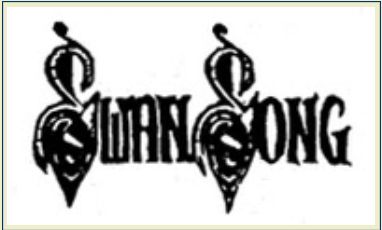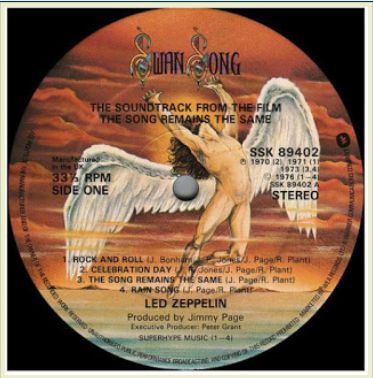Swan Song, Inc. opposed an application to register the mark SWAN SONG AUDIO for ""Consumer electronic products, namely, audio amplifiers, audio speakers, audio receivers, electrical audio and speaker cables and connectors, audio decoders, video decoders, speakers, power conversion devices, power converters, and power inverter" [AUDIO disclaimed], on the ground of likelihood of confusion with the registered mark shown below, for "phonograph records." Opposer asserted that the goods are related because "[p]honograph records, to be played and heard, must be played on a device (turntable) which requires a receiver, speakers and/or an amplifier." How do you think this came out? Swan Song, Inc. v. Swan Song Audio LLC, Opposition No. 91240005 (February 26, 2020) [not precedential] (Opinion by Judge Cheryl S. Goodman).

The marks:
Although opposer's mark may, to some, appear to be WAN ONG and Design, the Board saw it as SWAN SONG with each "S" being a stylized version of a swan. It found the dominant term in applicant's mark to be, not surprisingly, SWAN SONG. As to Opposer's mark, the Board observed once again that for a word-plus-design mark, the word portion is the part most likely to be impressed upon the minds of consumers. Moreover, each design portion "appears to suggest a swan" and the Board had "no doubt that consumers would recognize each design as a highly-stylized letter 'S.'" The Board concluded that the marks are similar in sound and appearance and convey similar meanings (i.e., the final performance or act) and similar commercial impressions.

The Goods:
Opposer submitted Internet evidence showing that some on-line retail outlets offer phonograph records and audio equipment, but the evidence did not show that the goods were sold under the same mark. Opposer also submitted more than 60 third-party registrations that purportedly covered phonograph records and audio equipment. The Board found that only 14 of them had probative value, since the rest covered a wide variety of diverse and unrelated goods.
The Board concluded that the goods are related. "It is common knowledge that phonograph records are used with audio equipment." The registrations also show that the goods are "complementary and thus related as they are offered under the same mark."
Channels of Trade:
Opposer's flimsy Internet evidence regarding retail sales was enough to convince the Board that the trade channels overlap.
Conclusion: The Board found confusion likely and it sustained the opposition.
TTABlog comment: How did you do? Do you think, in the real world, confusion is likely?
The content of this article is intended to provide a general guide to the subject matter. Specialist advice should be sought about your specific circumstances.
